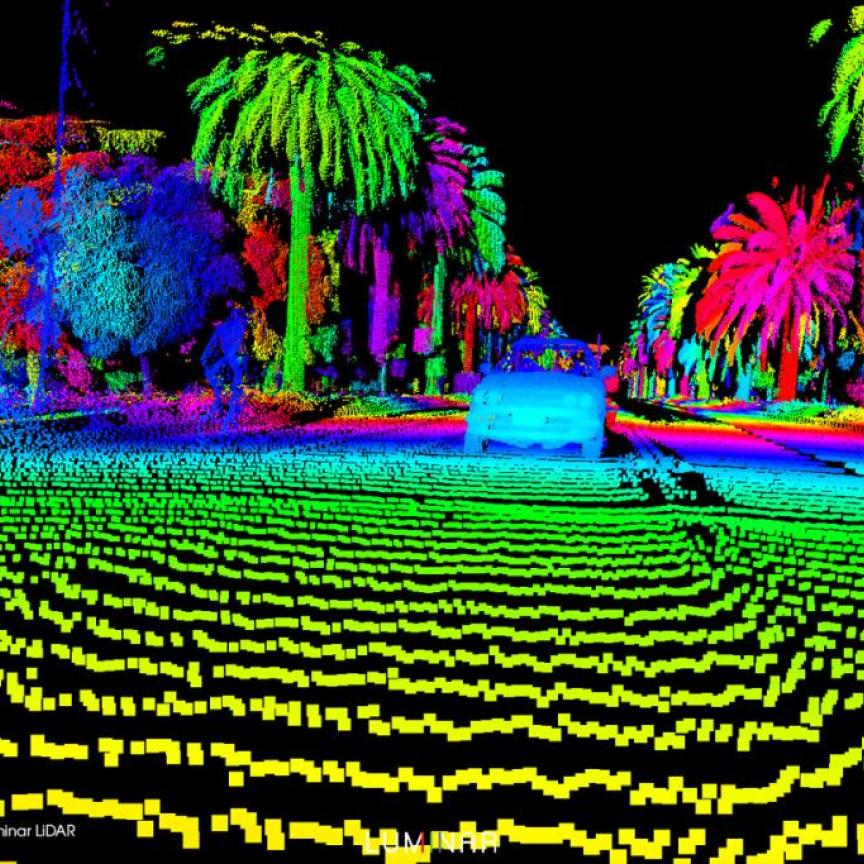‘Super’ is pretty apt for describing a light source that can emit the broad wavelengths of a lamp while providing the brightness and longer lifetimes of a laser. As witnessed at Laser World of Photonics, which took place from 22 to 25 June in Munich, Germany, manufacturers of supercontinuum laser sources are pushing the boundaries of light technology by expanding the wavelength ranges further than ever before. And with the introduction of new OEM platforms, supercontinuum lasers will soon move out of the research space and into new industrial applications, which until now have been limited to microscopy.
Supercontinuum generation − the formation of broad continuous light typically ranging from 400nm to 1,700nm − was first observed in 1970. Commercial products, however, have only existed for the last 10 years, and have been used primarily by the scientific and research markets.
According to Ross Hodder, head of sales at Fianium, the two technologies that have enabled the development of integrated supercontinuum laser sources are ultrafast lasers and photonic crystal fibres (PCF), the latter providing the nonlinear element in the process.
In the high-power commercial instruments on the market today, typically a 1,064nm picosecond fibre laser is put through a photonic crystal fibre, which creates nonlinear effects and broadens the spectral output to around 400-2,500nm. The design of the fibre is important because it determines the shape of the output spectrum.
Up until now, supercontinuum sources have mainly been confined to scientific applications, such as for fluorescence imaging or for spectroscopy used in materials science, although there are several companies that have integrated lasers into commercial products. One of the most notable examples is microscope manufacturer Leica Microsystems, which integrates NKT Photonics’ SuperK Extreme supercontinuum laser source into its newest SP8X confocal microscope.
So far, supercontinuum laser sources have not moved into other high-volume, commercial applications outside of microscopy. ‘Leica has been the pioneer in using supercontinuum in their microscopes for years, and this has up until now been the main application for supercontinuum,’ commented Jesper Toft Olsen, product line manager at NKT Photonics. ‘[Microscopy] is the largest application to date, but it will not be in the future − several new industrial applications within non-destructive testing like metrology and optical characterisation, where supercontinuum sources can replace for example lamps or multiple lasers are emerging and will be much larger.
‘It is still perceived as very high-tech and very new, even though it has been commercially available for more than 10 years,’ he added.
According to Fianium’s Hodder, using supercontinuum lasers as a replacement for conventional lamp sources in high-specification illumination applications provides a huge market potential for supercontinuum. ‘I think process metrology in the electronics industry, machine vision for sorting, and medical instrumentation are the three areas where this might take off soonest,’ Hodder remarked.
For these types of application, companies are currently using either a lamp or LED source, or discrete laser lines; both of which have limitations which impact throughput. Lamps, apart from having a limited spectral range, provide limited life times as low as a few hundred hours. ‘The company has to send in an engineer, replace the lamp, re-calibrate the instrument, and carry on − and they have to do this every one to two months,’ Hodder explained. ‘But with the supercontinuum source, you get a much broader spectrum covering more wavelengths − so you can do more with it − but also the spectral output is stable for several thousand hours of operation.’
If a company uses a laser, a supercontinuum source can be used to replace several single-wavelength lasers. ‘There are systems out there using multiple lasers, even up to 10 lasers − for example for flow cytometry or imaging − and they can all be replaced by one supercontinuum laser. It simplifies the set-up, but crucially, 10 lasers are much more expensive than one.
‘It’s partly a performance argument, but also an economic argument, which is surprising seeing as you’re replacing a simple lamp with an ultrafast laser,’ Hodder added.
Another potential application for supercontinuum is optical coherence tomography (OCT), a non-invasive imaging technique used in the medical field as well as for surface inspection. Currently, this is a single-modality test, but through the use of supercontinuum lasers, it could be combined with other imaging techniques. ‘The fact that you can use one light source for several things means that you could do things that could be multimodal, which aren’t at the moment,’ said Frederik Nielsen, senior application engineer at NKT Photonics. ‘You could combine OCT with other tests, while still using the same light source. For instance, it could be possible to combine fluorescence or spectroscopic measurements simultaneously with OCT measurements.’
The introduction of plug-and-play commercial supercontinuum laser sources, designed for users other than laser specialists, have helped push this application forward, Nielsen added: ‘In the beginning, supercontinuum lasers were promising for OCT. But researchers found it difficult to use them for this application, because they were basically running an experiment in their experiment just to use the supercontinuum source,’ he commented. ‘Today, using supercontinuum for OCT is now a big interest because now you can focus on your research, not on running a supercontinuum laser.’
Maturing technology
With all the advantages that supercontinuum can offer, it’s a wonder why more companies haven’t already rushed to adopt the technology. Although commercial sources have been around for quite some time, there is a still a general lack of knowledge within the industry concerning supercontinuum lasers, according to Nielsen: ‘When we go to trade shows, people come to us with questions such as “what does this do?” For us, of course, a supercontinuum source is not anything special, but a lot of people − even people who are quite skilled in optics and are quite familiar with lasers − haven’t necessarily seen supercontinuum sources or think of them as a potential solution to their application,’ Nielsen said. ‘And, even the most famous universities do not teach photonics students about supercontinuum. It’s still a maturing technology and a maturing market.’
Both NKT Photonics and Fianium are working with OEM customers to develop supercontinuum solutions for the applications previously mentioned. And according to Fianium’s Hodder, the technology is almost ready to enter these new markets. ‘We are now engaged with four or five OEM customers at the product development end, working on putting the system into a machine. They are in the final stages of product development and are now planning their product launches.
‘The first high duty cycle industrial application is likely to be on the market from next year, and that’s likely to be in the medical instrumentation area,’ Hodder added.
And, it is expected that these emerging markets will far surpass the current microscopy and scientific markets. ‘At the moment we sell around 300 supercontinuum systems into scientific applications, and the OEM’s potential that we’re engaged with is approximately 2,000 systems per year,’ Hodder said.
Moving from research into industry
However, the conditions in a laboratory and an industrial inspection line can vary considerably, which is why manufacturers are tailoring their supercontinuum solutions for integrators and OEMs. ‘The two things we’ve been working on to enable these more industrial applications is: cutting wavelengths into the blue − so now we can achieve less than 400nm − and increasing the power,’ Hodder noted. ‘In a laboratory, scientists can be very careful at being efficient with photons, but in industrial applications the specification can be more demanding, so we’ve needed to increase the power available as well.’
Fianium’s Whitelase OEM platform, which it presented at Laser World of Photonics, can reach powers up to 10W with constant operation. Later this year, the company plans to re-launch the product with 20W of power. ‘The OEM system is smaller, it’s got a much reduced interface, it has no integrated power supply − its DC power,’ commented Hodder. ‘It’s exactly the same technology, but smaller, simpler and lower in cost − more aimed at the integrator and the OEM market.’
Investment cost is another factor that will push supercontinuum into more industrial applications. Also displayed at Laser World of Photonics was NKT Photonics’ new platform, the SuperK Compact, which is on the market for just under €6,000. ‘I think [the price of the instrument] helps to push supercontinuum into applications which so far haven’t been able to afford a supercontinuum light source,’ Nielsen commented.
Supporting technologies
But as supercontinuum lasers become higher in power and lower in cost to enter more industrial settings, it also demands that supporting technologies need to be developed in order to cope with new capabilities enabled by supercontinuum. ‘The supporting equipment has to be available − the spectrometers, detector systems and so on − they have to move forwards as well,’ explained Nielsen. ‘So, it’s not just about advancing the supercontinuum light source. We will push the price of the supercontinuum source but then customers may realise that their imaging technology is too expensive, or their detection technology is too expensive.
‘Sometimes, one technology has to drive the other, because until you have a break with one platform you do not develop a break with the other,’ Nielsen continued. ‘It’s not just the light source − we are really pushing the light source in terms of power, weight and performance, but I think all of the associative technologies need to follow.’
Although it’s uncertain as to where supercontinuum sources will be used in the first high-volume application outside of microscopy, it seems as though one thing is for certain: that the industry will see a lot more of this ‘super’ laser in the future. ‘There are so many possibilities that you cannot do with any other laser,’ Olsen remarked. ‘The fact that you can freely choose wavelength and bandwidth from 400nm up until 2,400nm makes the possibilities endless. I truly believe that you’ve only seen the tip of the iceberg of what can be done with supercontinuum laser sources.’
 Jessica Rowbury is a technical writer for Electro Optics, Imaging & Machine Vision Europe, and Laser Systems Europe.
Jessica Rowbury is a technical writer for Electro Optics, Imaging & Machine Vision Europe, and Laser Systems Europe.
You can contact her on jessica.rowbury@europascience.com or on +44 (0) 1223 275 476.
Find us on Twitter at @ElectroOptics, @IMVEurope, @LaserSystemsMag and @JessRowbury.


